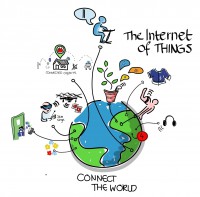Internet of Things and the Climate Change
The future of climate change management lies in the ability to use a holistic approach to environmental data and monitoring information. This merging of technological advances, such as real-time sensors, big data technologies, and Internet of Things (IoT), gives industries and governments the ability to effectively predict and manage climate change.
In any industry, when all incoming data is connected and centrally accessible through a SaaS application, the flow of information is much more efficient and effective. For example, instead of having a separate file and procedure for energy management, waste management, environmental compliance and incident management, a company can have all emissions-related records environmental and H&S compliance data in one system. From this single system, they would have the ability to manage compliance activity, data monitoring, and resource management at the same time. Adopting such a structure offers any entity the ability to converge all incoming sources of information to create a much more integrated enterprise platform for EH&S+S management.
At the crux of this method of centralized information is the Internet of Things. The IoT is the interconnection of uniquely identifiable embedded computing devices within the existing internet infrastructure. The proliferation of IoT is expected to usher in an age of automation in the environmental field, while enabling advanced applications like a smart grid or real time water quality measurement and management. IoT is able to offer connectivity beyond machine-to-machine communications and cover a variety of protocols, domains and applications.
In relation to environmental management, a “Thing” in the IoT could refer to flow monitoring sensors, a groundwater monitoring well, emission monitoring stations, Gas Chromatography (GC) instruments used in analytical chemistry for testing the purity of a particular substance, or separating the different components of a mixture or identifying a compound. Ultimately, any natural or man-made object that can be assigned an IP address and provided with the ability to transfer data over a network can become a thing in the IoT. The expanded use of this system is expected to create a plethora of new areas of application for internet connected automation. And, in turn, the IoT is also expected to generate a large amount of data from a huge variety of environmental monitoring devices, thereby increasing the need for better indexing, processing, and storing of incoming data.
The IoT is considered one of the fastest growing trends in technology. When applied to the environmental monitoring industry, there will be an overwhelming influx of information that will have to be dealt with. Many companies are concerned that the sheer volume of data will render the information useless. Environmental companies must invest in smart software and intelligent databases to deal with this new trend, hopefully changing the face of the environmental monitoring industry.



